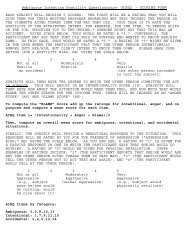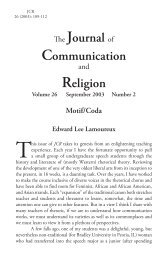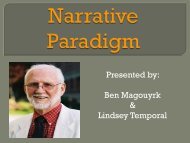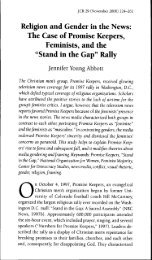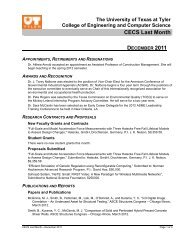"History, Analysis and Performance Considerations of Gerald Finzi's ...
"History, Analysis and Performance Considerations of Gerald Finzi's ...
"History, Analysis and Performance Considerations of Gerald Finzi's ...
You also want an ePaper? Increase the reach of your titles
YUMPU automatically turns print PDFs into web optimized ePapers that Google loves.
56Section B’The Crashaw text <strong>of</strong> Section B’ presents a loving appeal to the Lord for his awaited “longday” to come, while Finzi’s musical setting incorporates reaching gestures, an undulatingaccompaniment reminiscent <strong>of</strong> lapping ocean waves, subdued dynamics <strong>and</strong> extendeddiminuendos which together effectively portray, not an arrival, but rather a long fading awayuntil that which is most longed for is yet out <strong>of</strong> reach.Structurally, as Section C’ did not include full returns <strong>of</strong> all previously associated themes,so also Section B’ contains segments <strong>and</strong> inferences <strong>of</strong> Section B elements. The paralleling <strong>of</strong> B’<strong>and</strong> B however remains structurally <strong>and</strong> referentially intact.While at first glance the thematic materials comprising the majority <strong>of</strong> B’ appearunrelated to any previous sections <strong>of</strong> the anthem, a closer examination reveals not only motivicsimilarities, but direct restatements <strong>of</strong> Section B materials. The primary connecting elementbetween B’ <strong>and</strong> B is the scalar movement <strong>of</strong> the organ pedal, a direct reference to the originalmarch comprising theme d, <strong>and</strong> most particularly theme c in its quarter-note motion <strong>and</strong> limitedrise <strong>and</strong> fall (see Figure 6). Following the “Come love! Come Lord!” invitation from the soprano<strong>and</strong> alto voices Finzi presents us with the rising soprano figure “<strong>and</strong> that long day” at measure144, <strong>and</strong> again at measure 148 by the tenors <strong>and</strong> basses. This ascending melodic third followedby the upward leap <strong>of</strong> a sixth, is also a thematic return, being first introduced with the text “O letthat love” in the original B march, <strong>and</strong> in the identical key at measure 43 (see Figure 37).The distantly beckoning rising third on “come away” has been previously examined in itsrhythmic relation to the “Pelican” motive. However this exact figure also maintains aninteresting independent identity outside <strong>of</strong> Lo, the Full Final Sacrifice, having previously



